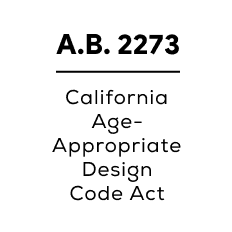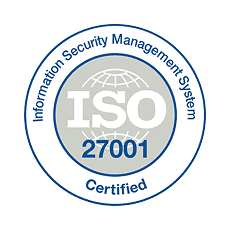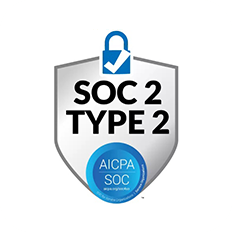Introduction
PrivateID is built for seamless, interoperable identity authentication with privacy at its core. Its edge-based architecture and patented tokenization keep biometrics on-device for 1:1 and use anonymized tokens for 1:N—enabling compliant, scalable authentication.
Panasonic (Panasonic Connect) offers FacePRO and related face-recognition solutions that pair Panasonic/i-PRO cameras with a server-side recognition engine. Images or extracted features are transmitted to a server (cloud or on-prem) for matching, aligning the product more with security/surveillance and access-control use cases than privacy-first identity auth.
1. Architecture
PrivateID: Performs 1:1 matching entirely on-device; no biometric images or templates leave the device.
Panasonic: Match-on-server design. Cameras send frames/features to a FacePRO server (or cloud service) to compare against a gallery; Panasonic also highlights Azure-hosted/cloud options that store derived features. Edge AI in i-PRO cameras primarily handles detection/analytics, with recognition handled on a server (e.g., Multi-AI Server).
2. Privacy & Tokenization
PrivateID: Patented Homomorphic Tokenization; no images/templates transmitted; IEEE 2410 compliant.
Panasonic: Panasonic materials indicate derived facial features/templates are stored and managed on a cloud/server, with data security controls; in on-prem deployments, the customer stores and manages templates/logs.
3. 1:1 vs 1:N Matching
PrivateID:
•1:1: Done on-device; nothing leaves the device.
•1:N: Only anonymized tokens sent to server; constant-time lookups.
Panasonic: Supports verify (1:1) and identify (1:N) by sending samples/features to a server that compares them to a database; performance and cost scale with gallery size and server capacity.
4. Multi-Modal Biometrics
PrivateID: Face, voice, palm, fingerprint; can combine with passkeys and risk signals.
Panasonic: Primarily face recognition (with related video analytics). Panasonic/i-PRO literature emphasizes face detection/recognition within video surveillance; it does not market voice/palm/fingerprint within the same platform.
5. Liveness Detection (PAD)
PrivateID: On-device anti-spoofing (photos, masks, screens, deepfakes) without transmitting biometrics.
Panasonic: Marketing references anti-spoofing/camouflage prevention, but PAD is part of the server-side recognition workflow. Public documentation highlights anti-spoofing features but does not advertise independent PAD certifications like iBeta for FacePRO specifically.
6. Scalability & Efficiency
PrivateID: Constant-time performance; ~1 KB tokens minimize bandwidth/compute.
Panasonic: Scales by adding server resources (on-prem or cloud). i-PRO edge analytics can reduce upstream load, but recognition still relies on server processing, so costs/latency rise with gallery size and throughput.
7. Accuracy
PrivateID: 99.999% accuracy across unlimited gallery sizes (privacy-preserving tokenization).
Panasonic: Panasonic Connect reports top-ranked NIST FRVT 1:1 results for its algorithm (Dec 6, 2022 press release). FRVT report cards list Panasonic submissions (e.g., psl_012). This validates 1:1 verification accuracy; public, large-scale 1:N deployment metrics are less emphasized.
8. Compliance & Security
PrivateID: On-device 1:1 and tokenized 1:N inherently align with GDPR/CCPA/HIPAA/BIPA; IEEE 2410 certified; no biometric data stored or transmitted.
Panasonic: Offers enterprise security controls; however, because biometric samples/features are processed and persisted on servers, customers must handle DPIAs, legal bases, retention, and data-subject rights—or isolate via strictly on-prem deployments.
9. Deployment & Integration
PrivateID: Lightweight SDK/API; runs on general-purpose devices; no cloud dependency for 1:1.
Panasonic: Delivered as server software (FacePRO) integrated with Panasonic/i-PRO cameras and can be deployed on-prem (Windows/Kubernetes/Multi-AI Server) or as cloud (Azure) services. Tooling and documentation target security and operational analytics stacks.
10. Ethics & Trust
PrivateID: Purpose-built for consented, privacy-preserving authentication.
Panasonic: A long-standing security vendor; solutions are widely used for surveillance/access control and people/retail analytics. This emphasis can raise different governance considerations than user-centric authentication contexts.
11. Cost & Total Cost of Ownership (TCO)
PrivateID: Edge and token-based design cuts compute, bandwidth, and storage.
Panasonic: Server-centric matching (and optional cloud storage of features) ties cost to compute, storage, and gallery size; i-PRO edge analytics can trim some infrastructure, but recognition throughput still drives server spend.
12. Latency & User Experience
PrivateID: Delivers ~100 ms real-time authentication at any scale with constant-time token ops.
Panasonic: Requires network roundtrips to a recognition server and server-side processing; on-prem can reduce WAN latency but still depends on server capacity and gallery size.
13. Deployment Flexibility
PrivateID: Fully edge-capable (1:1) and hybrid edge-to-server (1:N) with tokenization; cloud/on-prem/hybrid without lock-in.
Panasonic: Flexible on-prem and cloud offerings. i-PRO cameras run edge AI apps for detection and analytics; recognition typically uses Multi-AI/FacePRO servers, not pure on-camera matching.
14. Ecosystem & Interoperability
PrivateID: Standards-based (IEEE 2410, FIDO2) and interoperable with IAM/MFA/Passkeys/RBA.
Panasonic: Tightly integrated with Panasonic/i-PRO surveillance ecosystems; supports third-party integrations via server APIs, focusing on security video workflows (face search, alarms, people counting), rather than passkey-native IAM.
15. Bias & Fairness
PrivateID: Tokenization removes demographic identifiers, reducing bias amplification.
Panasonic: Strong FRVT 1:1 scores indicate high verification accuracy; however, like other image-based systems, fairness depends on data/practice. Panasonic does not advertise tokenization-style de-identification.
16. Business & Market Positioning
PrivateID: Built for privacy-first enterprise/consumer authentication in regulated sectors.
Panasonic: Positions FacePRO for security, surveillance, access control, and analytics—with deployments across retail, campuses, transport, etc. It’s less optimized for privacy-critical identity auth where no-biometrics-off-device is required.
Summary
PrivateID performs 1:1 on the device edge and uses homomorphic tokenization for 1:N, so biometric data never leaves the device for 1:1 and only anonymized tokens are exchanged for 1:N—yielding constant-time performance, built-in compliance, and lower TCO.
Panasonic delivers a mature server-based facial recognition stack (FacePRO) with strong verification accuracy (top-ranked NIST FRVT 1:1 results reported in Dec 2022) and robust surveillance integrations. But because matching is server-side (cloud or on-prem), it introduces additional latency, compliance, and scaling costs.














